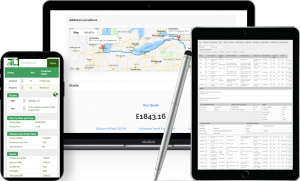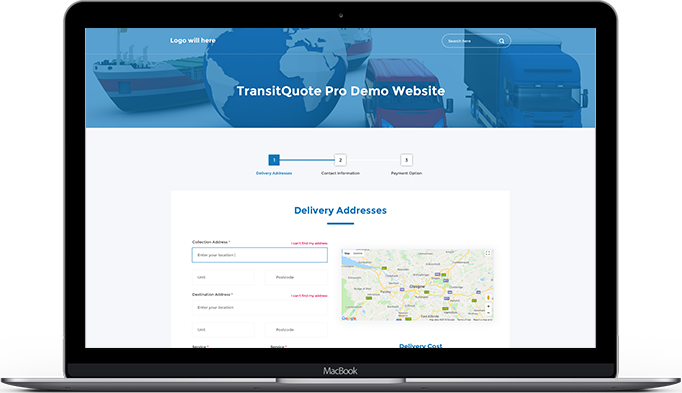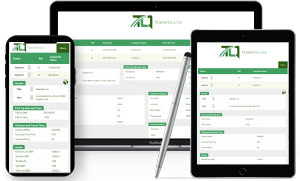
An effective fleet management strategy is crucial for the success of any delivery business. The goal of fleet management is to maximize efficiency and minimize costs while ensuring the delivery vehicles are in good working condition and the delivery of goods is timely and consistent. Here are 5 strategies for managing a fleet of delivery vehicles:
- Vehicle Maintenance
- Route Optimization
- Driver Management
- Technology Implementation
- Real-time Monitoring
Introduction
Fleet management is a crucial aspect of any delivery business, as it directly impacts the efficiency and profitability of the organization. A well-managed fleet of delivery vehicles can help ensure timely deliveries, reduce costs, and improve customer satisfaction. On the other hand, a poorly managed fleet can lead to increased operational costs, delayed deliveries, and dissatisfied customers.
In this blog, we will discuss 5 effective strategies for managing a fleet of delivery vehicles to help delivery businesses achieve their goals. These strategies include vehicle maintenance, route optimization, driver management, technology implementation, and real-time monitoring. By incorporating these strategies into your fleet management plan, you can improve the overall efficiency and effectiveness of your delivery operations.
Vehicle Maintenance
Regular vehicle maintenance is essential for ensuring the safety and reliability of delivery vehicles. Neglecting maintenance can lead to breakdowns, increased repair costs, and decreased productivity. Moreover, it can also pose a risk to drivers and other road users. To avoid these issues, it is important to prioritize vehicle maintenance and ensure that vehicles are regularly inspected and serviced.
The benefits of preventive maintenance are numerous. Regular maintenance helps to identify and resolve potential problems before they become more serious and costly. It also helps to extend the lifespan of vehicles, reducing the need for frequent replacements. Additionally, well-maintained vehicles are more fuel-efficient, reducing fuel costs and reducing the carbon footprint of your fleet.
In order to ensure that vehicles are properly maintained, delivery businesses can implement a preventative maintenance program. This program should include regular vehicle inspections, routine servicing, and timely repairs. By implementing a preventative maintenance program, delivery businesses can ensure that their vehicles are always in good working condition, reducing the likelihood of breakdowns and improving the overall efficiency of their operations.
Route Optimization
Route optimization is a crucial aspect of fleet management, as it helps to reduce travel time, increase delivery efficiency, and minimize fuel costs. By optimizing delivery routes, delivery businesses can ensure that vehicles are used in the most efficient manner possible, reducing the total time and distance traveled.
The use of technology for route optimization can greatly improve the efficiency of delivery operations. Route optimization software can take into account real-time traffic information, delivery schedules, and vehicle capacity to generate the most efficient routes. This helps to reduce the likelihood of delivery delays and improves the overall efficiency of delivery operations.
There are several strategies that delivery businesses can implement to optimize their delivery routes. One strategy is to use route optimization software to generate the most efficient routes. Another strategy is to use GPS tracking to monitor vehicle movements in real-time, allowing for adjustments to be made to routes as needed. Additionally, businesses can analyze delivery data to identify patterns and make changes to routes to improve efficiency.
By implementing these strategies, delivery businesses can optimize their delivery routes, reducing travel time, increasing delivery efficiency, and minimizing fuel costs. This leads to improved customer satisfaction and increased profitability for the business.
Driver Management
Driver management is an important aspect of fleet management, as drivers play a key role in the success of delivery operations. By properly managing drivers, delivery businesses can improve safety, increase productivity, and ensure timely deliveries.
Having a clear driver management system can help delivery businesses to better understand the strengths and weaknesses of their drivers, allowing for more effective training and coaching. This can improve driver performance, reducing the likelihood of accidents and improving the overall efficiency of delivery operations.
There are several strategies that delivery businesses can implement to manage their drivers effectively. One strategy is to provide regular training and coaching to drivers to improve their skills and performance. Another strategy is to use performance metrics to track driver behavior, such as speed, fuel efficiency, and safety. This information can then be used to identify areas for improvement and provide targeted training and coaching.
Another important aspect of driver management is ensuring that drivers are well-rested and healthy. This can be achieved by implementing flexible scheduling, providing adequate rest breaks, and promoting healthy lifestyles.
By implementing these strategies, delivery businesses can improve driver management, leading to increased safety, increased productivity, and improved customer satisfaction.
Technology Implementation
The use of technology is essential for modern fleet management, as it can greatly improve the efficiency and effectiveness of delivery operations. From route optimization software to GPS tracking and real-time monitoring, technology has the power to transform delivery operations and help businesses achieve their goals.
Implementing the right technology can help delivery businesses to streamline their operations, reduce costs, and improve customer satisfaction. For example, GPS tracking allows delivery businesses to monitor their vehicles in real-time, providing valuable insights into vehicle location, speed, and fuel efficiency. This information can then be used to make data-driven decisions, such as adjusting delivery routes to reduce travel time and fuel costs.
Route optimization software uses advanced algorithms to generate the most efficient delivery routes, taking into account real-time traffic information, delivery schedules, and vehicle capacity. By using route optimization software, delivery businesses can reduce travel time, increase delivery efficiency, and minimize fuel costs.
By incorporating technology into their operations, delivery businesses can transform their operations and achieve their goals. From improving delivery efficiency to reducing costs and improving customer satisfaction, technology has the power to make a positive impact on every aspect of delivery operations.
Real-time Monitoring
Real-time monitoring is a key aspect of fleet management, as it provides valuable insights into the performance of delivery operations. By monitoring delivery operations in real-time, delivery businesses can make informed decisions that can help to improve efficiency and reduce costs.
There are several areas of delivery operations that can be monitored in real-time, including vehicle location, speed, and fuel efficiency. GPS tracking technology allows delivery businesses to monitor these metrics in real-time, providing valuable information for decision-making.
For example, by monitoring vehicle speed, delivery businesses can identify areas where drivers may be speeding, which can lead to increased fuel consumption and decreased safety. By using this information to provide targeted training and coaching, delivery businesses can improve driver behavior and reduce costs.
Another important aspect of real-time monitoring is the ability to quickly respond to changes in delivery operations. For example, if a delivery is delayed due to traffic, real-time monitoring allows delivery businesses to quickly adjust delivery routes to ensure that deliveries are still made on time.
By implementing real-time monitoring, delivery businesses can make informed decisions that can help to improve efficiency and reduce costs. Whether it’s improving driver behavior, reducing fuel consumption, or ensuring timely deliveries, real-time monitoring provides the information needed to make data-driven decisions that can drive success.
Conclusion
Managing a fleet of delivery vehicles can be a complex and challenging task, but by implementing the right strategies, delivery businesses can improve efficiency, reduce costs, and ensure customer satisfaction. From regular vehicle maintenance to route optimization and driver management, these strategies can help delivery businesses to achieve their goals and transform their operations.
In addition to these strategies, the implementation of technology and real-time monitoring can also play a critical role in improving delivery operations. From GPS tracking to route optimization software, technology has the power to make a positive impact on every aspect of delivery operations.
In conclusion, effective fleet management is essential for the success of delivery operations. By implementing these strategies, delivery businesses can improve efficiency, reduce costs, and ensure customer satisfaction, driving success and growth.
“Don’t let inefficient delivery operations hold your business back. Take action today and start implementing these 5 effective strategies for managing your fleet of delivery vehicles using our powerful suite of plugin software. Try these free demos to see how our plugins can transform your transport business to become more efficient and profitable.



